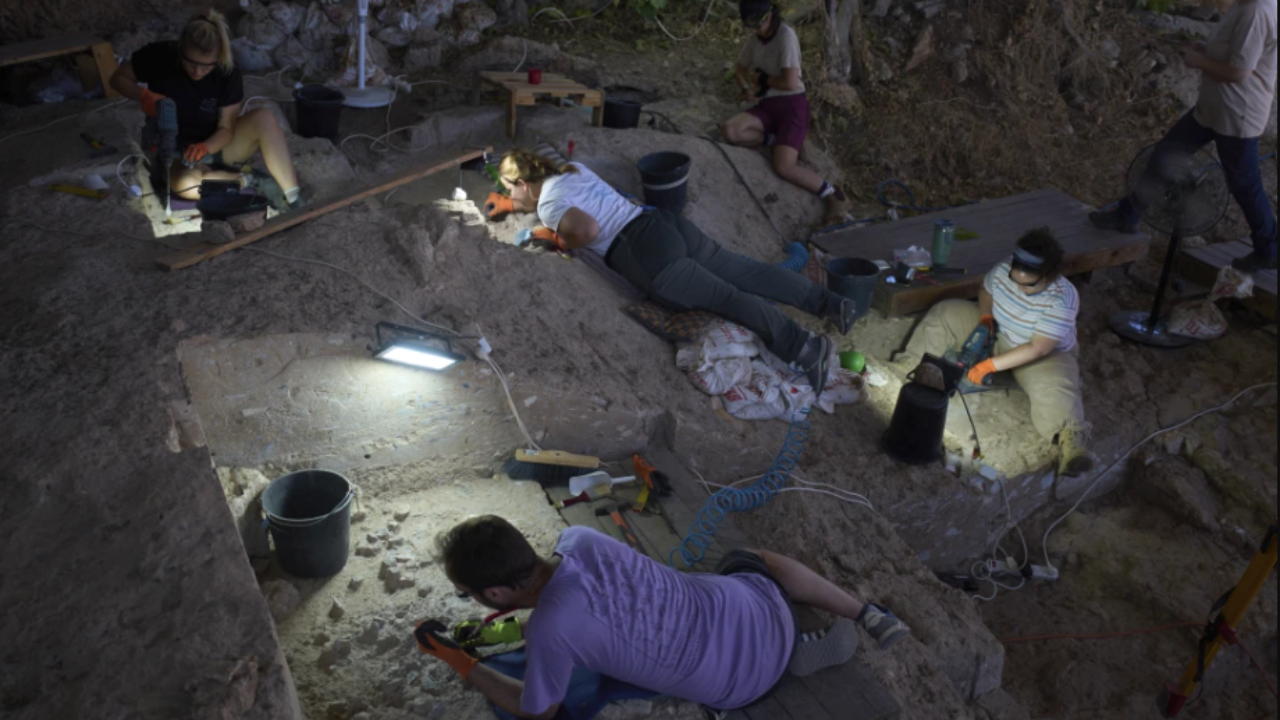
©(AP Photo by Ariel Schalit)
Pre-reading questions:
I will read each question. Then, please answer them.
- Can you think of a time when you saw or heard about a ceremony to remember someone?
- If archaeologists dig in your town 1,000 years from now, what objects do you think they might find?
Vocabulary:
I will read the words, meanings, and sample sentences. Then, repeat after me.
- skeleton /SKEL-i-tn/
- sense /sens/
- fragment /FRAG-muhnt/
- ash /ash/
- clue /kloo/
[noun] – the structure of bones that supports a human or animal body
Scientists found dinosaur skeletons deep underground in the desert.
[noun] – a feeling or understanding about something, often not based on facts
The students had a strong sense of excitement before the school trip.
[noun] – a small broken piece of something larger
Workers found fragments of an old statue in the garden while digging.
[noun] – the soft gray powder left after something burns completely
After the campfire went out, only ash and a few hot coals remained.
[noun] – a piece of information or evidence that helps solve a mystery or problem
The police found several clues at the scene of the robbery.
Article reading:
Please read the whole article. Then, I will check your pronunciation and intonation.
Archaeologists have found one of the world’s oldest known burial sites in central Israel. The discovery was made in Tinshemet Cave and includes human remains from about 100,000 years ago. The findings were published in Nature Human Behavior in March 2025. The skeletons were carefully placed in burial positions inside pits, along with objects such as basalt stones, animal bones, and pieces of ochre. Experts believe these items were used in rituals to honor the dead. The discovery shows that early humans may have had spiritual beliefs and a sense of life after death.
Work at the site began in 2016. Archaeologists used fine tools to remove the bones and objects without damage. They found two complete skeletons and several skulls, as well as over 500 fragments of colored ochre. The remains were well preserved due to ash from fires, rain, and the type of stone in the area. Experts say this level of preservation is rare and useful for studying ancient behavior. The discovery supports findings from Skhul and Qafzeh Caves in northern Israel but is more reliable because of better research methods. The site also provides clues about contact between Neanderthals and Homo sapiens. Researchers say the burial practices show a major change in human culture, including early signs of symbolic thinking and claims over land.
Work at the site began in 2016. Archaeologists used fine tools to remove the bones and objects without damage. They found two complete skeletons and several skulls, as well as over 500 fragments of colored ochre. The remains were well preserved due to ash from fires, rain, and the type of stone in the area. Experts say this level of preservation is rare and useful for studying ancient behavior. The discovery supports findings from Skhul and Qafzeh Caves in northern Israel but is more reliable because of better research methods. The site also provides clues about contact between Neanderthals and Homo sapiens. Researchers say the burial practices show a major change in human culture, including early signs of symbolic thinking and claims over land.
Comprehension questions
I will read each question. Then, please answer them based on the article.
- Where did archaeologists find one of the world’s oldest burial sites?
- What is the name of the cave where the discovery was made?
- How old are the human remains found in the cave?
- What helped keep the remains in good condition?
- What does the discovery tell us about early human culture?
Discussion questions
I will read each question. Then, please answer them.
- Have you ever visited a museum or a place with old objects? If so, what did you see there? If not, would you like to go to one? Why or why not?
- Have you ever watched a movie or read a book about early humans or ancient times? If so, what was it about? If not, what do you think early human life was like?
- Do you agree that it is important to study the lives of early humans?
- Why do you think early humans put things like stones and bones in the burial site?
- Why is it helpful to learn about human life from a long time ago?